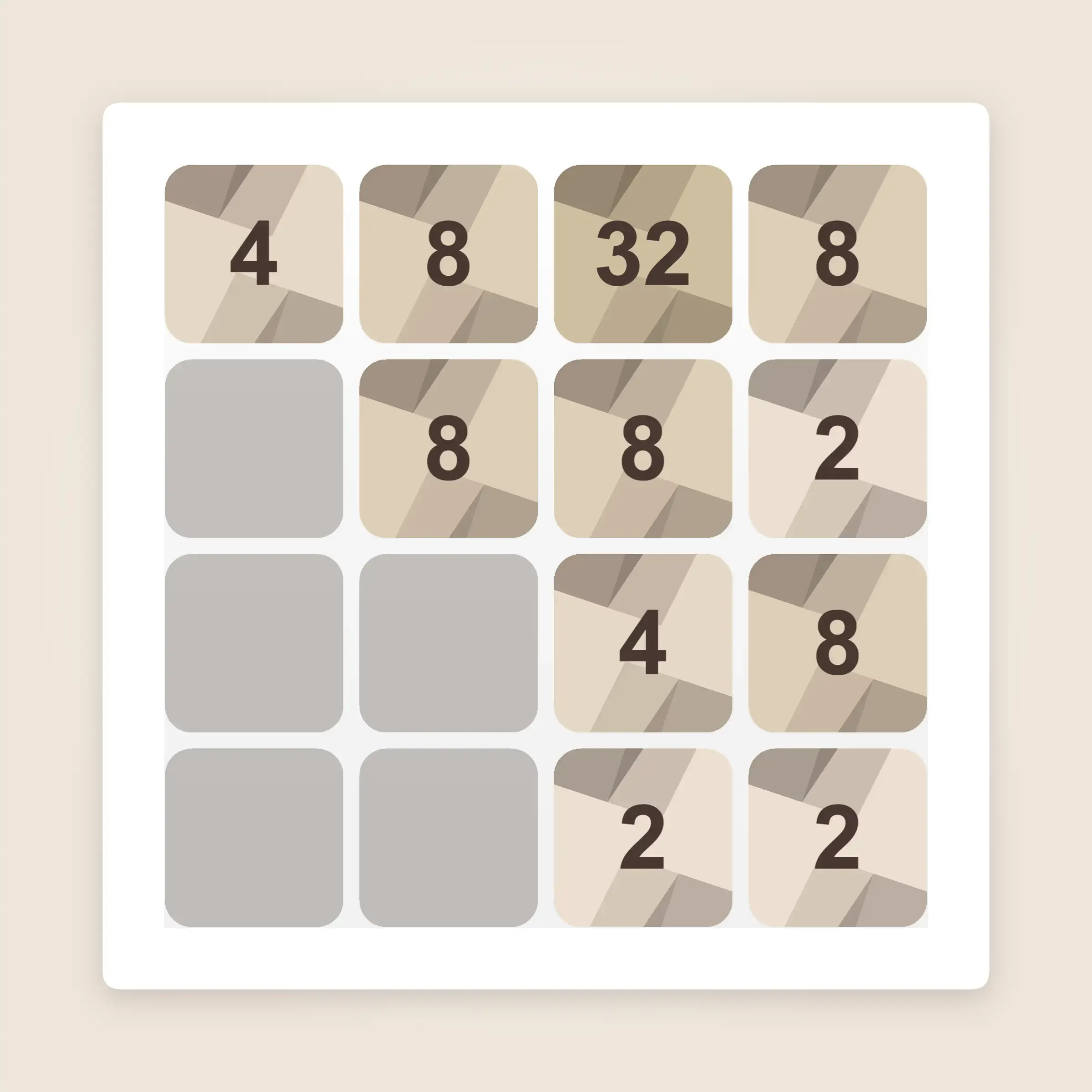
2048 Game Advancement Skills Explained
Building Number Chains
Number Chaining is one of the most important advancement techniques in the game of 2048, which helps players to build a stable and efficient merging system.
The basic concept of number chaining:
- Primary chain construction: Starting with the largest number, arranged in decreasing order of powers of 2
- Subchain layout: build a sequence of secondary numbers next to the primary chain
- Chain reaction: sequential merging through precise control
Example chaining: 2048 1024 512 256 4 8 16 128 2 4 8 64 2 2 4 32
Space Management Tips
Efficient space management is a key ingredient in breaking through to high scores:
Space Partitioning:
- Main activity area: used for large number storage and major merge operations
- Buffer: used for temporary storage of newly generated numbers.
- Merge area: an area dedicated to the merging of small numbers
Space control principle:
- Maintain a minimum of 3-4 spaces for maneuvering.
- Set up "goalie" numbers in key locations
- Create controlled digital flow pathways
- Reserve backup space for emergencies
Timing of merges
Proper merge timing determines the direction of the game:
Optimal merge timing:
- Safe merging:
- Ensure that the merger does not disrupt the existing digital chain
- There is enough space to accommodate the newly generated numbers
- Merging creates a more favorable situation
- Forced merge:
- When space is running out
- To prevent a deadlock from forming
- To create critical space
situations where merging is not appropriate:
- Would destabilize major number chains
- Cannot maintain basic layout after merger
- Sacrificing long term layout for short term gain only
Numerical Forethought and Layout
High level 2048 players need to have the ability to prejudge:
Numerical Prejudging Skills:
- New numerical prognostication:
- Predicting where 2 and 4 will appear
- Evaluate the impact of new numbers appearing in different positions
- Prepare multiple response options
- Merge path prediction:
- Calculating the final result of a multi-step merge
- Evaluating the advantages and disadvantages of different merger sequences
- Anticipating potentially dangerous situations
Dynamic layout adjustment:
- Adjusting digit positions based on prognostic results
- Reserve positions for upcoming large numbers
- Create multiple alternative merge scenarios
- Keep the layout flexible and adjustable
Layout example and prediction: 1024 512 128 4 → expected merge 256 64 16 2 → secondary chain 32 8 4 2 → reserve number 4 2 empty empty → maneuver space
